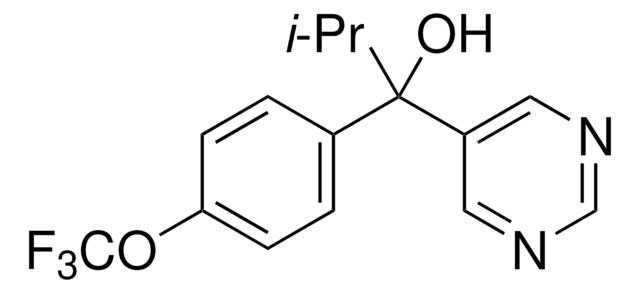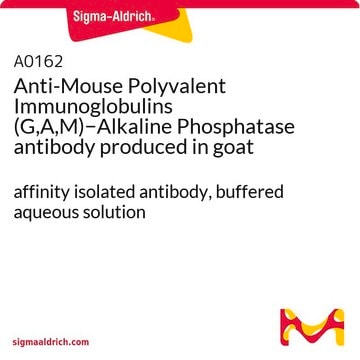Wichtige Dokumente
A9431
Ancymidol
suitable for plant cell culture, BioReagent
Synonym(e):
α-Cyclopropyl-α-(4-methoxyphenyl)-5-pyrimidinmethanol
Größe auswählen
Größe auswählen
About This Item
Empfohlene Produkte
Produktlinie
BioReagent
Qualitätsniveau
Form
powder
Methode(n)
cell culture | plant: suitable
Anwendung(en)
agriculture
Lagertemp.
2-8°C
SMILES String
COc1ccc(cc1)C(O)(C2CC2)c3cncnc3
InChI
1S/C15H16N2O2/c1-19-14-6-4-12(5-7-14)15(18,11-2-3-11)13-8-16-10-17-9-13/h4-11,18H,2-3H2,1H3
InChIKey
HUTDUHSNJYTCAR-UHFFFAOYSA-N
Suchen Sie nach ähnlichen Produkten? Aufrufen Leitfaden zum Produktvergleich
Allgemeine Beschreibung
Anwendung
Lagerklassenschlüssel
11 - Combustible Solids
WGK
WGK 3
Flammpunkt (°F)
Not applicable
Flammpunkt (°C)
Not applicable
Persönliche Schutzausrüstung
Eyeshields, Faceshields, Gloves, type N95 (US)
Hier finden Sie alle aktuellen Versionen:
Analysenzertifikate (COA)
Die passende Version wird nicht angezeigt?
Wenn Sie eine bestimmte Version benötigen, können Sie anhand der Lot- oder Chargennummer nach einem spezifischen Zertifikat suchen.
Besitzen Sie dieses Produkt bereits?
In der Dokumentenbibliothek finden Sie die Dokumentation zu den Produkten, die Sie kürzlich erworben haben.
Chromatograms
application for HPLCapplication for HPLCActive Filters
Unser Team von Wissenschaftlern verfügt über Erfahrung in allen Forschungsbereichen einschließlich Life Science, Materialwissenschaften, chemischer Synthese, Chromatographie, Analytik und vielen mehr..
Setzen Sie sich mit dem technischen Dienst in Verbindung.








